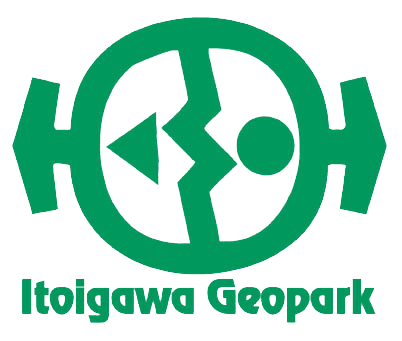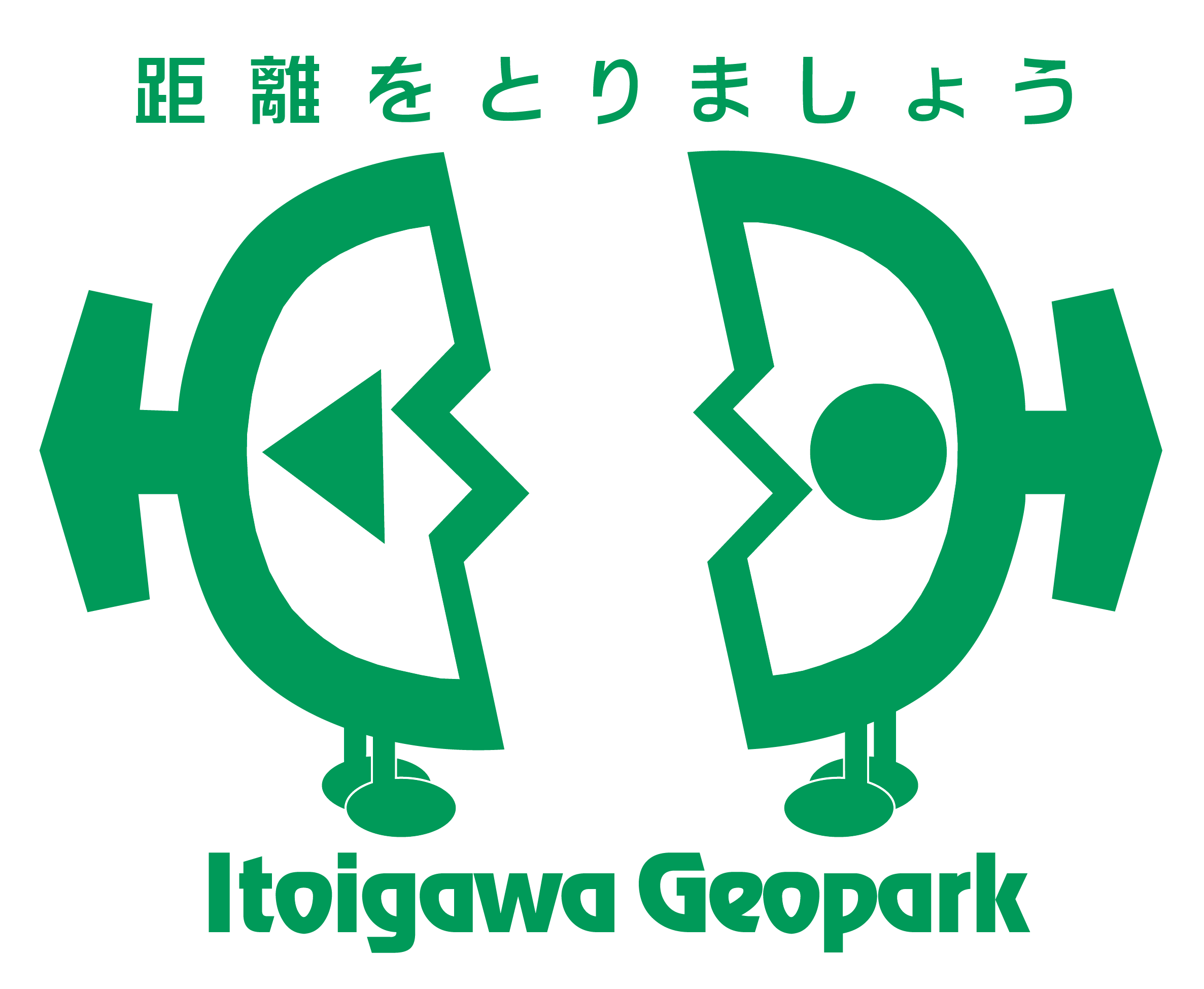In order to prevent the spread of COVID-19 (novel coronavirus), Itoigawa Geopark is working with local government authorities to raise awareness of important countermeasures local residents can use to protect themselves and those around them.


Original logo (L) Special logo urges residents to “Keep Distance” when in public (R)
The Itoigawa Geopark logo mark features an abstract depiction of the Itoigawa-Shizuoka Tectonic Line, a massive fault which runs through the center of Japan. The logo has been separated along this fault, with feet added to either side as a lighthearted way to represent “social distancing,” encouraging residents and visitors to maintain a safe distance from others in order to prevent the spread of COVID-19.
.jpg)
.jpg)
Geopark Mascot Characters Geomaru (L) and Nuna (R) wearing masks
Itoigawa Geopark’s mascot characters, Geomaru and Nuna, are also working to prevent the spread of COVID-19. They will both be wearing masks to remind people the important role that masks and appropiate coughing etiquette can play in preventing the spread of viral infections. Geomaru shows us that even mascots that don’t have ears can still wear a mask!
Characters and logo displayed at the GeoPal Information Center in Itoigawa Station, next to a notice about novel coronavirus countermeasures and related information
This new logo and mascot character design is currently displayed at all major Itoigawa Geopark facilities and we hope to see them used in public facilities and information campaigns throughout the Itoigawa Geopark area. At the time of writing, there are no confirmed cases of coronavirus in the Itoigawa Geopark or neighboring cities, but increased cooperation on global, national and local levels is vital to containing this epidemic and reducing risk to society’s most vulnerable populations.